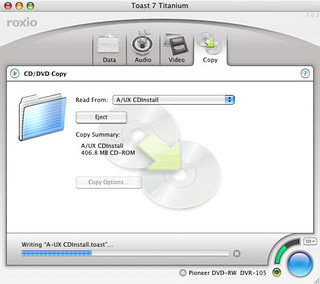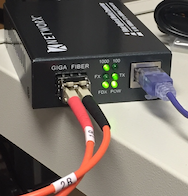ASIP, Black Magic, Helpers and Time
Recently, Brad Suinn from Apple took down his own personal .mac home pages where he has worked for quite a while, amassing info on the vagaries of ASIP and how to navigate its less than documented waters. It got me thinking about the passage of time, and what it means for Mac Managers. I emailed him when I saw something about it in the ASIP mailing list. I stay on the list, even though I’m working with and interested now in ASIP’s big brother, Mac OS X Server. He emailed back, and I won’t say what he said, since Apple is just this side of Big Brother, just that he would be finding out what was to become of the ASIP black magic files soon, once Apple decided where they should go, Im certain. ASIP black magic was the name of the tips and tricks Brad had put together, nothing more than a basic FAQ for Mac admins who were looking for help.
I remember my first time using the file, I was working on a friday night, migrating a server from one box to another, trying to maintain the permissions, keep the files and folders identical from one mac server to the next newer faster better. Of course, all of this had to be done off hours, which meant a weekend shot to hell. I know I spent one all nighter there, and the other 2 days making sure it was all perfect before the office arrived monday morning. Not because it was especially hard, Ive administered Novell and NT, which are tougher by far, even in terms of just plain user friendliness. ASIP “is ice cream” as my old friend Lou used to say. But being alone, and having no staff, as Im sure many IT and especially Macintosh IT guys are used to, all the work had to be done by me. Creative shops, ad agencies, design departments all are great shops for macs. They can often be *all* mac, since Microsoft Office, email and web are universal on both platforms, you dont need to buy a PC “just to get work done.” Often I would ensure that iMacs took the place of administrative workstations, not only performing word processing spreadsheet and day to day office tasks flawlessly, but also giving the office a cool vibe with the high gloss colors the iMacs were sporting back then. Mac OS 9 had several applications, including Timbuktu, Apple Remote Desktop, Lansurveyor, and Virex Admin which made administering them very simple. I used to find I had the tools I needed to check on and fix things in the office in Manhattan from my weekend trips to my girlfriend’s house on the Cape.
I often needed all the help the tutorials (Mac Manager Tips and Tricks), mailing lists (MM and ASIP), FAQ’s (ASIP Black Magic), free programs (Ashare Helper) and just plain IT guy camaraderie that I could find. The Mac’s small market share meant all-mac shops were even rarer, and a big staff was never needed, so you had yourself and all you could learn and ask to rely on when things went sour. Now that the Mac platform is based on Unix, I’m amazed at the plucky little ASIP application and that we relied on it so much. I find it still runs very well, is reliable and so simple, the ease in administering it more than makes up for its lack of cool buzz words. But now that its day has come and gone, the Mailing list is quiet, and OS X server is the new sherrif in town.
Once after spending an entire saturday in Manhattan setting up both an NT server and an ASIP server (I setup the Mac and my friend Dion, who is a top notch tech (for a PC guy) setup the windows box) we stopped into a bar in midtown and ordered a beer. I put some money in a pile on the bar and asked the bartender to just “keep em comin” and told Dion I had changed the bartender startup service from “manual to automatic”. We laughed and I tipped my beer at him and said, “What’s better than an NT joke?” he clinked my beer and said, “someone to share it with”.


